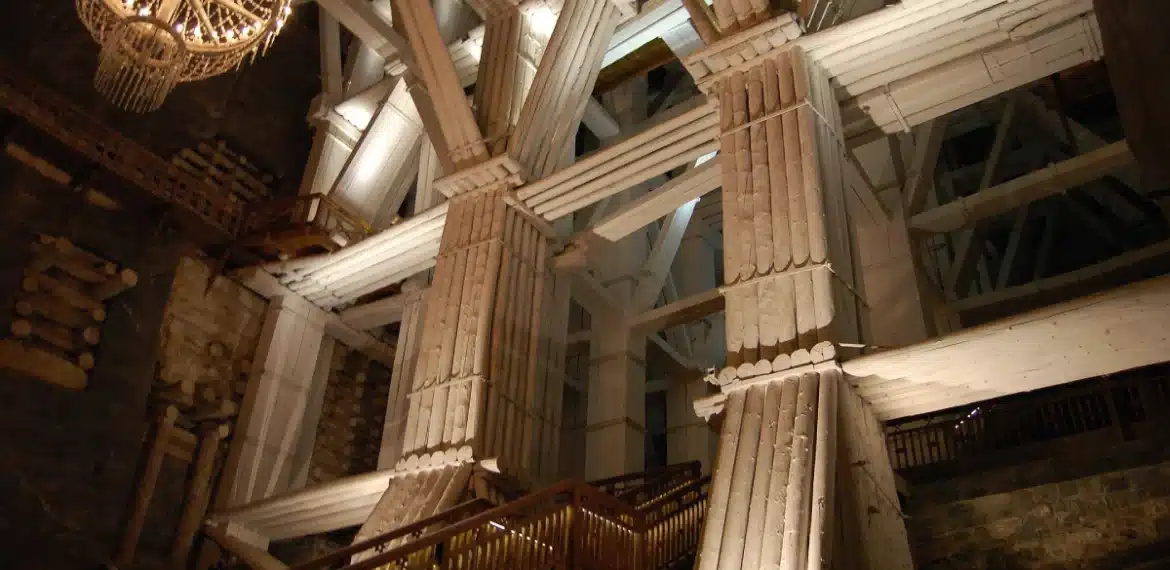Contents
For centuries, Poland has been renowned for its rich salt deposits, shaping not only its economy but also its cultural and historical landscape. Even today, salt mining continues to play a vital role in its development. Millions of tourists and travellers make their way from all over the world to see the underground marvels of salt mines in Poland. Here are some of the most noteworthy industrial and historical mines that are worth visiting.
Biggest Salt Mines in Poland
Visit the Wieliczka Salt Mine
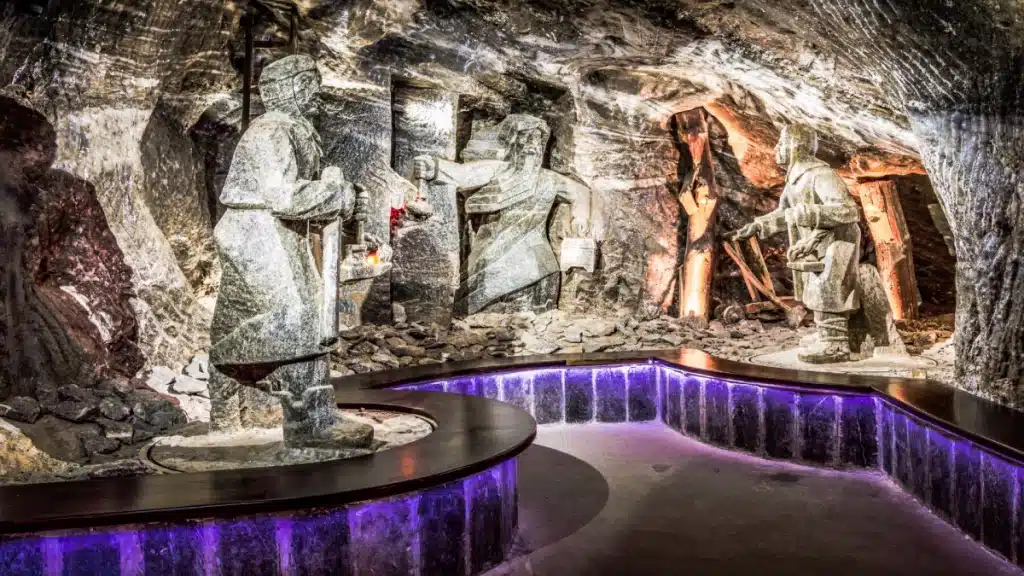
The Wieliczka Salt Mine, a UNESCO World Heritage Site, is a marvel of engineering and artistry. It is located 40 kilometers away from the historic city of Krakow. Its tunnels with intricate salt sculptures and reliefs, attract visitors from all around the globe. Down there, every chamber and corridor tells a tale. From its establishment in the 13th century, the Wieliczka Salt Mine stands as a living chronicle, inviting exploration of its storied past within the saline depths. The Kraków Saltworks, a manufacturing and distribution facility for the royal salt deposits, can also be found there. Because of its status as one of the most popular underground tourist destinations in the world, guided tours of Wieliczka Salt mine are available in a plethora of different languages, and the mine itself is open every day of the year.
Kłodawa Salt Mine – a unique salt mine worth visiting
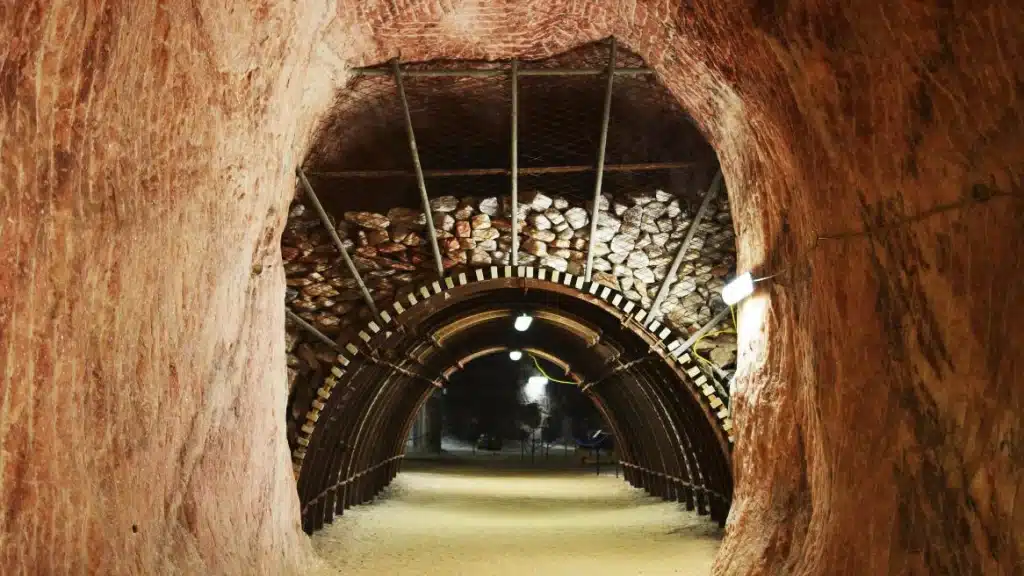
Situated in central Poland, the Kłodawa Salt Mine is renowned for its vast reserves and modern mining techniques. Currently it is considered the largest active salt mine in Poland. It remains a vital hub for salt production, catering to both domestic and international markets. In spite of its thriving industrial operation, a tourist exhibition can also be found there. It is the deepest tourist route at 600 meters deep, and contains some of the only deposits of pink rock salt naturally found in this part of the world.
Bochnia Salt Mine – a UNESCO World Heritage Site
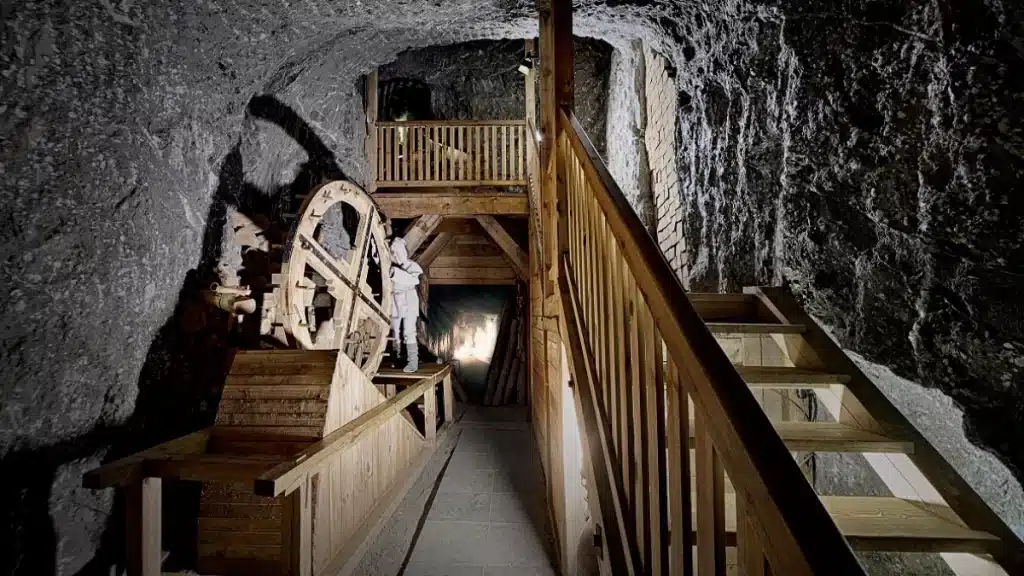
With a history spanning over 700 years, the Bochnia Royal Salt Mine is one of the earliest and most important European excavation zones and the first Polish commercial salt mine. Bochnia Mine is also on the UNESCO World Heritage List, as it joined the Wieliczka mine in 2013. It operated continuously from the 13th century until the late 20th century. Nowadays, it features a full-fledged, underground tourist route and a salt-carved sanatorium revered for its wonderful air. Its underground chambers house stunning salt formations and offer visitors a glimpse into the past.
Solino Salt Mine in Inowrocław
The Solino Salt Mine in Inowrocław serves both as one of the largest salt mines in Poland, as well as one of the most unique fuel storage facilities. It is owned by the Polish petrol company Orlen and found in a town of Inowrocław in northern Poland.
Polkowice-Sieroszowice Mine
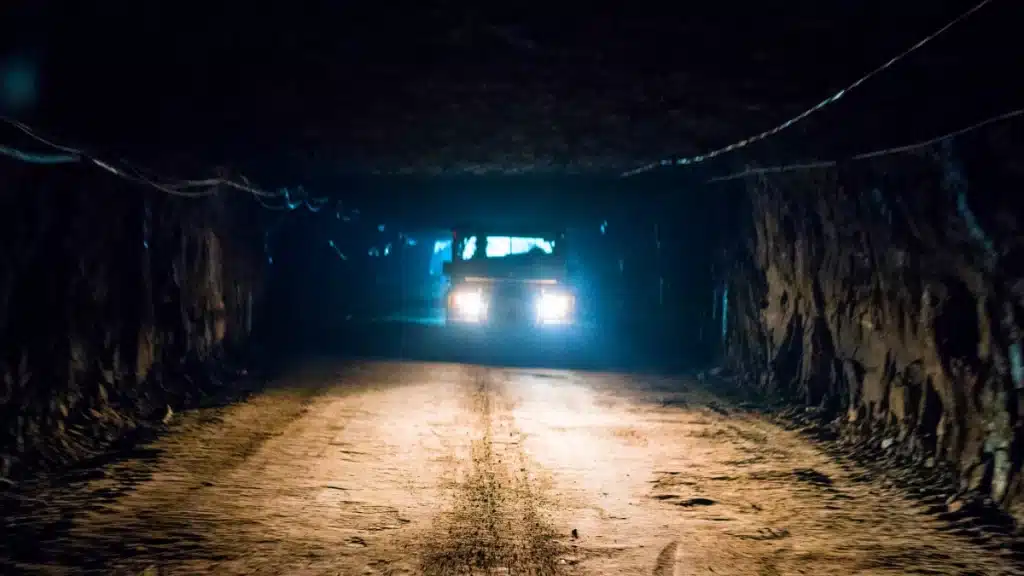
While the Polkowice-Sieroszowice mine is primarily a copper and silver mine, it doesn’t change the fact that it is also one of the largest rock salt deposits in Poland. The mine is located in the Lower Silesia region and has been established after a merger between the Polkowice Mine (established 1968) and the Sieroszowice Mine (est. 1980). Even though there is no tourist route open at the moment, it is still considered one of the most important European industrial operations. The Polkowice Mines exemplify Poland’s modern approach to salt extraction, employing cutting-edge technologies to maximise efficiency and sustainability.
History of Salt Mines in Poland
Oldest Salt Mines in Poland
Poland has been collecting salt for more than a thousand years. The Wieliczka Salt Mine, which is known as one of the oldest salt mines still in use, is a reminder of this long-standing practice.
Development of Salt Mining Industry in Poland
Poland’s salt mining business grew very quickly over many hundreds of years, thanks to better technology and rising demand. It grew from a small business to an important part of the country’s income.
Environmental Impact of Salt Mining in Poland
While salt mining is crucial for Poland’s economy, it also poses environmental challenges, such as land subsidence and brine disposal. Efforts are underway to mitigate these effects through sustainable practices and technological innovations.
Tourist Attractions in Polish Salt Mines
Underground Chapels and Sculptures
Polish salt mines are not just industrial sites but also cultural treasures, featuring stunning chapels and sculptures carved entirely from salt. These artistic marvels offer visitors a unique blend of history and artistry. Many of the chambers contain intricate salt carvings, including one depicting The Last Supper in Wieliczka, or salt sculptures that were created centuries ago by medieval artists.
Health Benefits of Salt Therapy
Salt therapy, also called halotherapy, has gained popularity due to its potential benefits against breathing problems and stress. Salt in Wieliczka and Kłodawa are naturally high in salt, and these places are used for healing purposes. One place in Bochnia called the Waʼyn Chamber is like an underground retreat where you can really get into this type of health practice.
Tourist Experiences and Activities Offered in the Salt Mines
Polish salt mines have a lot to offer to visitors of all ages, from guided walks to underground boating. You can find all the information you need on the websites of the salt mines or on tourist guides that are available on the salt mines’ grounds and in many Krakow hotels.
Conclusion
Salt mining remains a cornerstone of Poland’s heritage, economy, and identity, shaping its past, present, and future. As Poland continues to modernise its salt mining practices and explore sustainable alternatives, the industry is poised for continued growth and innovation. Beyond their economic contributions throughout history, Polish salt mines serve as living museums, preserving the nation’s cultural and historical legacy for generations to come. It is highly recommended for you to visit Wieliczka or any other Polish salt mines to feel the miraculous, salty air and enjoy the beautiful underground exhibitions.
FAQs
What are the most famous salt mines in Poland?
The Wieliczka and Bochnia Royal Salt Mines are two of the most renowned salt mines in Poland. Kłodawa is also a renowned destination, but is mostly visited by those interested in purchasing authentic Polish rock salt.
When was the first salt mine in Poland established?
The Bochnia Salt Mine was given its royal status in 1248, which makes it Poland’s first ever industrial mining site. It has ceased commercial operation in the 1990s, but the tourist route continues to be open to the public.
How can one reach the Wieliczka Salt Mine?
To get to Wieliczka, one can take a train or bus from Kraków, which is a short distance away and takes between 20-40 minutes of travel from the city centre. Wieliczka Salt mine is a very popular day trip destination for Krakow locals and tourists alike.
Why are the Royal Salt Mines in Poland considered unique?
The two mines are considered unique due to their 700-year-long historical heritage and ornate pieces of salt artwork. Wieliczka Chapel of St. Kinga features beautiful salt chandeliers, statues and monuments carved by miners and talented medieval sculptors. It was even visited by the late Pope John Paul II. The Ważyn Chamber in Bochnia is a sophisticated living space complete with a bar, ballroom with dining hall, a soccer field, and more. As long as rooms are available, it is possible for you to spend the night in the Bochnia Salt Mine pretty much every day of the year.
